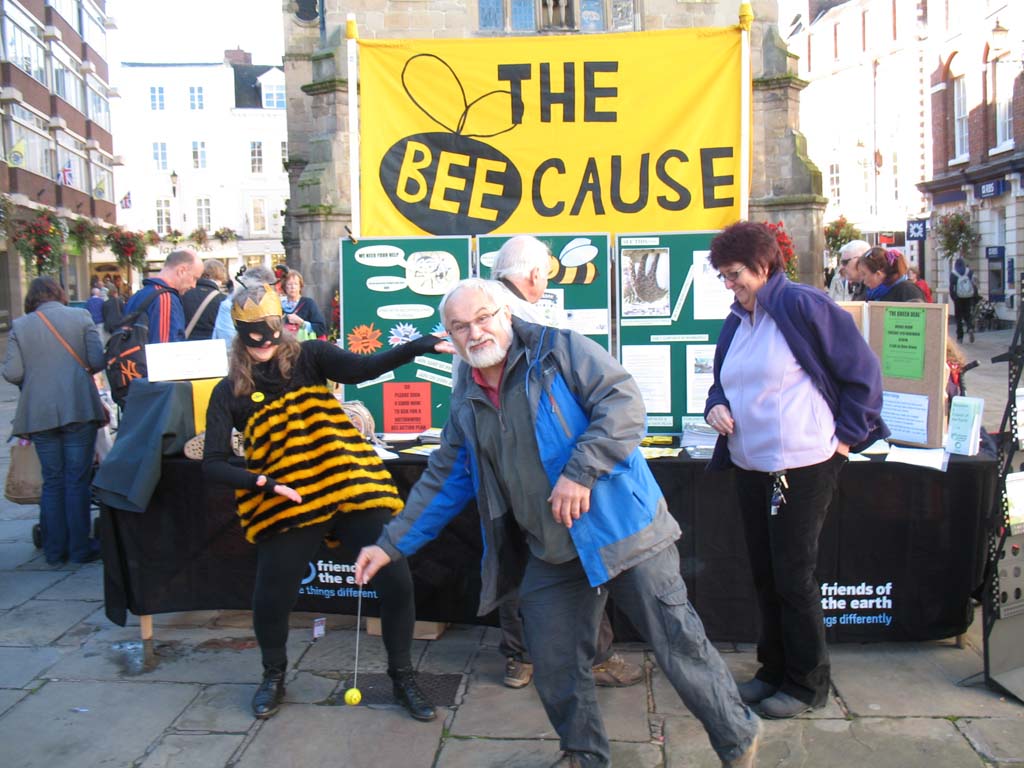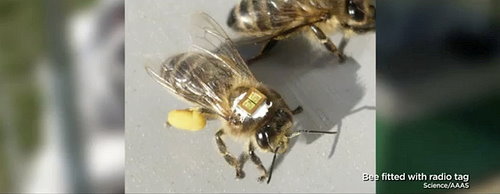THE BEE CAMPAIGN

Update November 2013
SFoE is still campaigning about bees.
Because we need bees
Because they are under threat.
The campaign, which is strong across the country, has been pretty successful up to now – and we must keep up the pressure.
GOOD!
Europe has put a temporary ban on neonicotinoids (the pesticides which it’s believed are a major threat to bees) – even though our own Environment Secretary, Owen Paterson, voted against the move.
GOOD!
The UK government has committed itself to producing a National Pollinator Strategy
BUT WE MUST CONTINUE TO PUSH.
To be effective, the Bee Action Plan must help all bees and tackle all causes of bee decline. It must cover the whole of the UK and include ambitious action such as:
- Flower-rich meadows protected and restored in every county
- Helping farmers protect crops using fewer pesticides
- Every park and verge to provide space for bees
Here’s a link to a petition to the Bees Minister, Lord MacCauley, asking him to include all the above. Please sign it and send it to him.
https://www.foe.co.uk/what_we_do/bee_cause_petition_to_lord_de_mauley_40967.html .
________________________________________________________________In October 2012 we had a stall in the Market Square.
103 petition cards were signed to send to David Cameron - asking him to help save bees by introducing a National Bee Action Plan.
Bees, along with other pollinating insects, are vital to:
• Our food supply - they pollinate most of our fruit and vegBees need us.
• Our economy - without bees costs for farmers would rise, meaning higher food prices
• Our quality of life - our gardens, parks and countryside
British bee numbers have fallen dramatically in recent years. And the way we farm our food and plan our towns and cities is making the problem worse.
We are the solution.
David Cameron can change all that. Join other Shrewsbury people and sign the petition
Make a Bee Hotel
Download the file opposite for details of how to make your own bee hotel.

|
bee_hotel.pdf Size : 2057.893 Kb Type : pdf |
Bee deaths linked to common pesticides
Two recently published scientific studies show that bee populations are being ravaged by widespread use of a particular type of pesticide, the neonicotinoids


Our love of pesticides has been nothing short of disastrous for our insect friends, the honeybees along with the bumblebees and other wild native bee species. Two recent scientific studies point to modern pesticides as the main culprit for the often dramatic declines in both domestic honeybees, Apis mellifera, as well as native wild bee populations.
The pesticides in question are the neonicotinoids, a family of pesticides that are chemically related to nicotine. The neonicotinoids are the first new class of insecticides introduced in the last 50 years. Instead of carrying out their deadly effects by coating the surfaces of a plant's leaves and stems, neonicotinoids are taken up by and circulated inside flowering plants. When a bee collects nectar and pollen, she also sips a dose of these pesticides.
Neonicotinoids are so-named because they act as nicotinic acetylcholine receptor agonists, binding to and activating these neural receptors, causing paralysis and death. This class of pesticides are the most commonly and widely used in the world, used both by large-scale agricultural operations as well as in home gardening products.
Two independent studies show that even low doses of neonicotinoid pesticides can impair bees' navigation abilities, reduce the growth of bee colonies and reduce the number of new queens produced.
Henry, M., Beguin, M., Requier, F., Rollin, O., Odoux, J., Aupinel, P., Aptel, J., Tchamitchian, S., & Decourtye, A. (2012). A Common Pesticide Decreases Foraging Success and Survival in Honey Bees. Science, 336 (6079), 348-350 doi:10.1126/science.1215039 [Not Open Access]
Whitehorn, P., O'Connor, S., Wackers, F., & Goulson, D. (2012). Neonicotinoid Pesticide Reduces Bumble Bee Colony Growth and Queen Production. Science, 336 (6079), 351-352 doi:10.1126/science.1215025 [Not Open Access]
